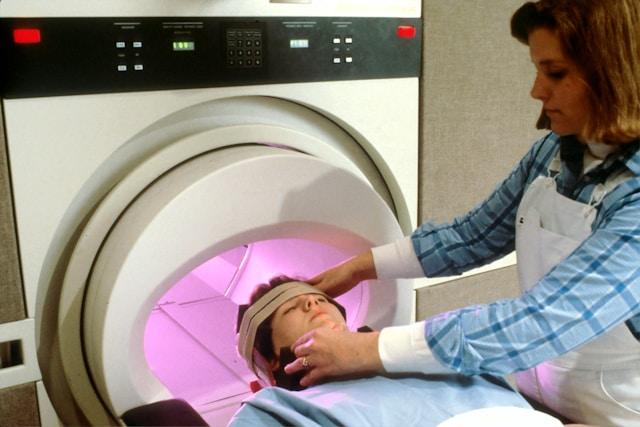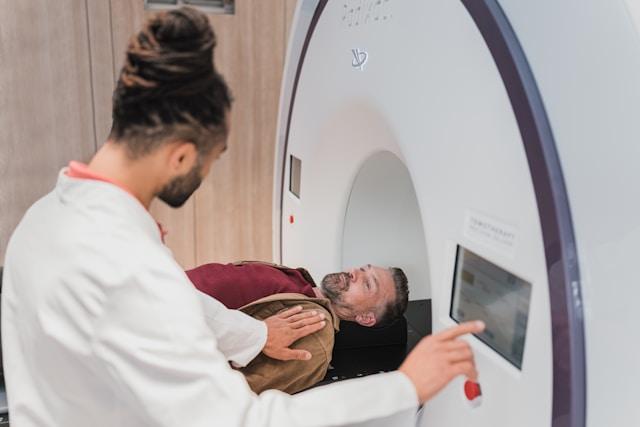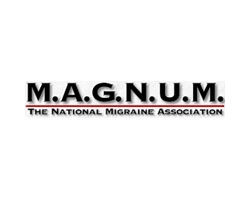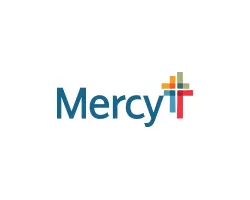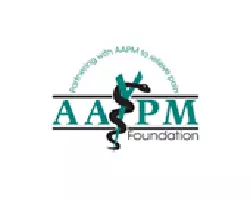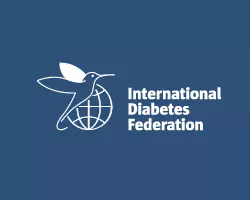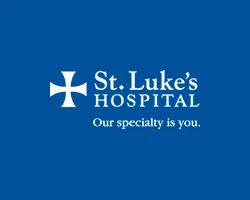Experiencing pain after thoracic surgery is a common concern for many patients in the hospital. Understanding how to manage and alleviate this discomfort is crucial for a smooth recovery process. From medication management to lifestyle adjustments, we will explore various methods to enhance your comfort and promote healing. By implementing these practical suggestions, you can navigate through the recovery phase with greater ease and confidence.
Key Takeaways
-
Take Action: Discuss your post-thoracotomy pain with your healthcare provider in the hospital to explore suitable treatment options.
-
Stay Informed: Understand the various perioperative and long-term pain management strategies to address thoracic pain effectively.
-
Prioritize Pain Management: Optimize pain control by following the recommended treatment plans and strategies discussed in the article.
-
Be Proactive: Implement preventive measures to reduce the risk of thoracic pain after chest surgery.
-
Seek Support: Engage with your healthcare team for personalized guidance on managing and alleviating post-surgery pain.
-
Stay Committed: Consistency in applying pain management techniques can significantly impact your long-term recovery and quality of life.
Understanding Post-Thoracotomy Pain
Defining the Pain
Post-thoracotomy pain refers to persistent thoracic discomfort experienced after chest surgery. It arises due to damage to thoracic intercostal nerves and muscles during the procedure. This type of thoracic pain affects approximately up to 50% of patients undergoing chest surgery.
Recognizing Symptoms

Patients may experience increased sensitivity and itching at the incision site post-surgery. Different types of pain sensations, such as sharp, dull, or throbbing, are common after thoracotomy. The pain can manifest in various thoracic locations including the chest, back, and ribcage.
Impact on Recovery
Post-thoracotomy pain can significantly impede the recovery process following chest surgery. Effectively managing this pain is crucial for enhancing overall recovery outcomes. Addressing pain promptly is vital for ensuring a smoother journey towards complete healing.
Treatment Options Overview
Analgesic Strategies
Various strategies can help manage post-thoracotomy pain effectively. Medication management plays a crucial role in providing relief from pain. Injection therapies, such as nerve blocks, and stimulation therapies, like spinal cord stimulation, are also essential in pain management.
Among the different approaches, systemic analgesics are commonly used to alleviate post-thoracotomy pain. These medications work by targeting pain receptors throughout the body. While systemic analgesics offer significant benefits in pain relief, they may come with potential side effects that individuals need to be aware of. Consulting healthcare providers before using systemic analgesics is vital to ensure safe and effective pain management.
Surgical Approaches
Surgical interventions are another critical aspect of managing post-thoracotomy pain. Various surgical approaches, such as thoracic epidural catheters or intercostal nerve blocks, can help alleviate pain effectively. These surgical interventions target specific areas to provide targeted pain relief. When considering surgical options for pain relief, it is essential to consult with healthcare providers to determine the most suitable approach for each individual’s condition.
Managing Pain Symptoms
Medication Use
Pain management after chest surgery often involves medications prescribed by healthcare providers. Common types include opioids, NSAIDs, and acetaminophen. Opioids like morphine target the central nervous system to reduce pain signals. NSAIDs, such as ibuprofen, work by decreasing inflammation and pain. Acetaminophen helps to lower pain perception in the brain.
It is crucial for patients to adhere to their prescribed medication regimens to effectively manage post-thoracotomy pain. Following the recommended dosage and timing is essential for optimizing pain relief outcomes.
Physical Therapy
Physical therapy plays a pivotal role in alleviating pain and enhancing recovery post-chest surgery. It focuses on improving mobility, strength, and flexibility in the chest area. By incorporating tailored exercises and techniques, physical therapy aids in reducing discomfort and promoting faster healing.
Engaging in physical therapy sessions can significantly enhance mobility and functionality while minimizing post-surgery pain levels. The structured exercises help patients regain strength and range of motion in the chest region, leading to improved overall well-being.
Alternative Remedies
In addition to traditional medications and physical therapy, there are alternative remedies that individuals may consider for managing post-thoracotomy pain. Practices like acupuncture have shown promising results in reducing pain intensity by stimulating specific points on the body associated with pain relief.
Herbal remedies, such as turmeric or ginger, are known for their anti-inflammatory properties that can aid in pain management post-surgery. However, it is crucial for patients to consult their healthcare providers before incorporating any alternative therapies into their treatment plan.
Perioperative Pain Strategies
Pre-Surgery Planning
Pre-surgery planning plays a crucial role in pain management by setting the foundation for a smoother recovery process. Patients benefit from detailed discussions with healthcare providers to understand what to expect during and after surgery. These conversations help manage expectations and reduce anxiety, which can indirectly impact post-operative pain levels. By addressing any concerns or uncertainties before the surgery, patients are better prepared both mentally and physically.
Healthcare providers guide patients through pre-surgery planning by outlining necessary steps such as pre-operative assessments, medication adjustments, and lifestyle modifications. They ensure that patients are well-informed about the procedure, potential risks, and pain management options available. This proactive approach not only empowers patients but also fosters a sense of control over their pain relief journey.
Intraoperative Techniques
During surgery, specific intraoperative techniques are employed to minimize post-surgery pain. Surgeons may utilize nerve blocks or epidurals to target pain pathways directly, reducing the need for large doses of systemic analgesics post-operation. By incorporating these techniques, surgeons aim to provide effective pain relief while minimizing side effects associated with traditional pain medications.
The choice of surgical technique can significantly impact post-thoracotomy pain experienced by patients undergoing chest surgery. Minimally invasive procedures tend to result in less tissue trauma and nerve damage compared to open surgeries, leading to reduced chronic pain outcomes post-surgery. Surgeons collaborate closely with anesthesiologists to tailor intraoperative pain management strategies based on each patient’s unique needs and medical history.
Immediate Post-Surgery Care
Immediate post-surgery care is critical for effective pain management and ensuring a smooth recovery process. Healthcare providers play a vital role in monitoring patients closely for any signs of discomfort or complications following surgery. By promptly addressing post-operative pain, healthcare teams can prevent it from escalating into more severe issues and facilitate a quicker recovery overall.
Post-operative care practices focus on optimizing pain relief while promoting healing and mobility. This includes administering appropriate analgesics, monitoring vital signs, encouraging early ambulation, and providing emotional support to patients as they navigate the initial stages of recovery. Healthcare providers work collaboratively to create personalized care plans that address each patient’s unique pain management needs.
Optimizing Pain Control
Tailored Pain Management
Tailored pain management for post-thoracotomy pain involves creating personalized plans based on individual needs. By customizing treatment approaches, healthcare providers can address specific pain triggers effectively. Personalized pain management plans consider factors like the type of surgery, patient preferences, and existing health conditions. This tailored approach can lead to better pain control and overall patient satisfaction.
Patients benefit from tailored pain management through improved outcomes such as reduced pain intensity and shorter recovery times. Healthcare providers can adjust medications, therapies, and dosages to suit each patient’s unique needs. Individualized care plays a crucial role in managing post-surgery pain effectively by addressing patient-specific challenges and concerns.
Monitoring and Adjustment
Continuous monitoring and adjustment of pain management strategies are essential for optimizing relief after chest surgery. Regular assessments allow healthcare providers to track the effectiveness of current treatments. By closely monitoring patients’ responses to medications and therapies, adjustments can be made promptly to ensure adequate pain control.
Healthcare providers play a vital role in adjusting treatment plans based on patient responses. They analyze feedback from patients regarding the effectiveness of current pain management strategies. Through ongoing monitoring and adjustments, healthcare teams can fine-tune treatment approaches to provide optimal pain relief while minimizing side effects.
Patient Education
Educating patients about post-thoracotomy pain is crucial for empowering individuals to manage their discomfort effectively. Patients need comprehensive information about the expected pain levels, potential side effects of medications, and self-care techniques. By understanding what to expect during the recovery process, patients can actively participate in their pain management.
Patient education also involves providing guidance on when to seek help for escalating pain or unexpected symptoms. Healthcare providers play a key role in ensuring that patients receive clear instructions on managing their pain at home. Empowered with knowledge, patients can confidently navigate the post-surgery period with a better understanding of how to address discomfort.
Preventing Thoracic Pain
Risk Factor Mitigation
Mitigating risk factors related to post-thoracotomy pain is crucial for a smoother recovery. Implementing strategies such as proper wound care and physical therapy can significantly reduce the likelihood of persistent pain. Lifestyle modifications, including maintaining a healthy weight and avoiding smoking, are essential in minimizing the risk of chronic pain development. Addressing these risk factors promptly is key to preventing long-term discomfort.
Early Intervention
Early intervention plays a pivotal role in effectively managing post-thoracotomy pain. Prompt treatment not only alleviates immediate discomfort but also prevents the pain from escalating into a chronic condition. Healthcare providers play a vital role in early detection and intervention by closely monitoring patients’ pain levels and promptly addressing any signs of distress. By intervening early, healthcare professionals can enhance patients’ overall recovery experience.
Lifestyle Adjustments
Incorporating lifestyle adjustments post-surgery can significantly contribute to pain management success. Patients can benefit from adopting a nutritious diet rich in anti-inflammatory foods to promote healing and reduce inflammation around the surgical site. Engaging in tailored exercise routines, under medical supervision, can help improve flexibility and strengthen muscles, ultimately aiding in pain relief. Embracing healthy lifestyle habits not only accelerates recovery but also enhances overall well-being post-surgery.
Long-term Management Strategies
Follow-Up Care
Follow-up care plays a crucial role in post-thoracotomy pain management by ensuring proper healing and addressing any complications. Regular check-ups allow healthcare providers to monitor the progress of pain and identify any potential issues early on. Ongoing communication with medical professionals enables adjustments to treatment plans, leading to optimal pain relief.
Chronic Pain Considerations
Managing chronic pain after chest surgery requires specific considerations due to its long-lasting nature. Unlike acute post-surgery pain that typically subsides within a few weeks, chronic pain persists for an extended period. Long-term pain management strategies, such as medication adjustments and physical therapy, are essential for effectively managing chronic conditions.
Support Systems
Support systems play a vital role in helping individuals cope with post-thoracotomy pain. Support groups provide a platform for sharing experiences and receiving emotional support from others facing similar challenges. Counseling services offer professional guidance and tools to manage emotional distress during the recovery process. Seeking emotional and psychological support is crucial for overall well-being and enhanced recovery.
Closing Thoughts
In understanding post-thoracotomy pain, you’ve gained insights into various treatment options, pain management strategies, and long-term solutions. By optimizing your pain control and focusing on perioperative and preventive measures, you can significantly enhance your recovery journey. Remember, proactive steps in managing thoracic pain can lead to improved comfort and overall well-being. Stay informed, consult with healthcare professionals, and tailor these strategies to suit your unique needs for a smoother path towards healing.
Take charge of your pain management today by implementing these strategies tailored to your situation. Your commitment to proactive care will pave the way for a more comfortable recovery process. Embrace these approaches wholeheartedly as you navigate the road to better thoracic health.
Frequently Asked Questions
Is post-thoracotomy pain common after chest surgery?
Post-thoracotomy pain is a common issue following chest surgery, affecting many patients. It can vary in intensity and duration based on individual factors like the type of surgery and personal pain tolerance.
What are some effective treatment options for post-thoracotomy pain?
Treatment options for post-thoracotomy pain include medications, physical therapy, nerve blocks, and sometimes surgical interventions. A combination of these approaches tailored to the individual patient’s needs is often the most effective in managing the pain.
How can I manage pain symptoms after chest surgery?
Managing pain symptoms post-chest surgery involves a multidisciplinary approach that may include medications, physical therapy, relaxation techniques, and psychological support. Working closely with your healthcare team to develop a personalized pain management plan is crucial for optimal recovery.
Are there specific perioperative pain strategies to alleviate thoracic pain, surgical wounds, incisions, surgical field, and spasms?
Perioperative pain strategies aim to address and manage pain before, during, and immediately after surgery. Techniques such as nerve blocks, epidurals, and patient-controlled analgesia can help reduce thoracic pain during these critical periods.
What are long-term management strategies for thoracic pain post-surgery, including surgical wounds, incisions, spasms, and technique?
Long-term management of thoracic pain may involve ongoing medication management, physical therapy, lifestyle modifications, and psychological support. Developing healthy coping mechanisms and staying connected with your healthcare provider are essential for sustained relief from chronic post-surgical thoracic pain.


